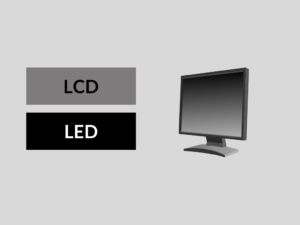UHD vs QLED: Exploring the Differences
High-definition televisions have revolutionized the way we experience visuals in our homes. UHD and QLED are two popular display technologies that have taken the market by storm. Understanding the difference between these two can help you make an informed decision when shopping for a new TV. In this article, we will delve into UHD and QLED, their features, uses, and highlight the key differences between them.
What is UHD (Ultra High Definition)?
Ultra High Definition, commonly referred to as UHD or 4K, denotes a display resolution significantly higher than standard High Definition (HD). It provides an immersive visual experience with a resolution of 3840 x 2160 pixels, offering four times more detail than Full HD. UHD ensures sharper images, enhanced color, and stunning clarity.
Examples of UHD
UHD technology can be found in a wide range of electronic devices, including televisions, computer monitors, projectors, and even smartphones. Leading brands like Samsung, LG, Sony, and Panasonic offer UHD televisions with various screen sizes and advanced features.
What is QLED (Quantum Dot LED)?
QLED is a display technology developed by Samsung. It involves the use of Quantum Dot nanoparticles that enhance color accuracy, brightness, and overall image quality. QLED TVs utilize an LED backlighting system with a layer of Quantum Dots in front to produce vibrant and lifelike colors.
Examples of QLED
Samsung is the pioneer of QLED technology and has a diverse range of QLED televisions available in the market. These TVs come in various sizes, offer exceptional picture quality, and boast additional features such as high contrast ratios, HDR (High Dynamic Range) support, and smart TV capabilities.
Differences between UHD and QLED
| Difference Area | UHD | QLED |
|---|---|---|
| Display Technology | UHD refers to the resolution of the display, conveying the number of pixels in a screen. | QLED, on the other hand, represents the type of display technology that utilizes Quantum Dots to enhance color reproduction. |
| Image Quality | UHD provides an incredibly sharp and detailed picture with high pixel density. | QLED combines high resolution with Quantum Dot technology, resulting in vibrant colors, improved brightness, and enhanced contrast. |
| Color Accuracy | UHD TVs vary in color accuracy depending on other factors, such as the panel used in the display. | QLED TVs generally offer superior color accuracy due to the use of Quantum Dot technology. |
| Black Level Performance | UHD TVs might struggle to deliver deep blacks, as it largely depends on the panel quality and backlighting technology. | QLED TVs often excel in black level performance, producing deep and rich blacks for a more immersive viewing experience. |
| Viewing Angle | UHD TVs tend to have a limited viewing angle, where colors and brightness might become less accurate when viewed from the sides. | QLED TVs generally have a wider viewing angle, allowing viewers to experience consistent picture quality from different positions in a room. |
| Backlighting | UHD TVs use various backlighting technologies, such as Direct-lit, Edge-lit, or Full Array, each with its advantages and drawbacks. | QLED TVs utilize either direct-lit LED or edge-lit LED backlighting, with the latter being more common in thinner models. |
| Brightness | UHD TVs can provide impressive brightness levels, but it depends on the individual model, panel used, and other features. | QLED TVs are known for their excellent brightness capabilities, making them ideal for well-lit environments. |
| Energy Efficiency | UHD TVs are generally more energy-efficient compared to QLED TVs, as they consume less power. | QLED TVs tend to consume more power due to the technology used for enhanced brightness and color reproduction. |
| Price Range | UHD TVs have a wide price range, offering options suitable for various budgets. | QLED TVs often come with a premium price tag, reflecting their advanced display technology and features. |
| Availability | UHD TVs are readily available from a wide range of brands and models. | QLED TVs, being a proprietary technology of Samsung, are primarily available in Samsung’s product lineup. |
Conclusion
In summary, UHD and QLED represent different aspects of modern television technology. UHD refers to the display resolution, while QLED represents a specific display technology utilizing Quantum Dots to enhance color reproduction. UHD offers incredible sharpness and detail, while QLED combines high resolution with vibrant colors and improved contrast. The choice between UHD and QLED depends on individual preferences, viewing needs, and budget.
People Also Ask:
Q: What is the main difference between UHD and QLED?
A: The main difference between UHD and QLED is that UHD refers to the display resolution, whereas QLED represents a specific display technology utilizing Quantum Dots to enhance color reproduction.
Q: Do all UHD TVs use QLED technology?
A: No, not all UHD TVs use QLED technology. UHD is a resolution specification, and TVs can employ various display technologies like QLED, OLED, or LED.
Q: Which is better, UHD or QLED?
A: The choice between UHD and QLED depends on individual preferences. UHD offers incredible sharpness, while QLED combines high resolution with vibrant colors and enhanced contrast.
Q: Are QLED TVs more expensive than UHD?
A: Yes, QLED TVs often come with a premium price tag compared to UHD TVs. The advanced display technology and additional features contribute to the price difference.
Q: Can I view UHD or QLED content on any TV?
A: Yes, both UHD and QLED content can be viewed on compatible TVs. However, to fully experience the benefits of UHD or QLED, it is recommended to have a TV that supports these technologies.


